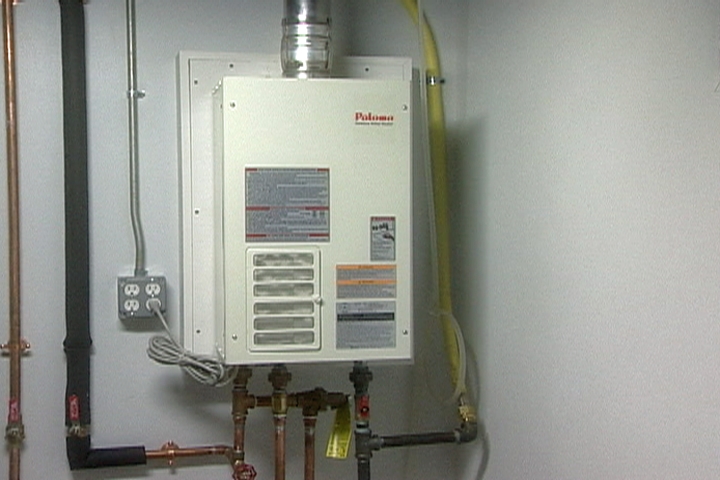Essential Maintenance Tips for Your Home's Hot Water System
Essential Maintenance Tips for Your Home's Hot Water System
Blog Article
Just how do you really feel with regards to Water Heater Maintenance Tips You Can't Afford to Forget?
:max_bytes(150000):strip_icc()/how-to-drain-a-water-heater-2719055-hero-35f0548b0f1f42f0b13ba96a33ab8da2.jpg)
Hot water is essential for daily convenience, whether it's for a revitalizing shower or washing meals. To ensure your warm water system runs successfully and lasts longer, routine upkeep is vital. This write-up offers sensible suggestions and insights on just how to maintain your home's warm water system to avoid disruptions and expensive repairs.
Introduction
Preserving your home's warm water system might seem overwhelming, but with a few basic steps, you can ensure it operates efficiently for years to find. This overview covers every little thing from understanding your hot water system to DIY upkeep pointers and recognizing when to contact specialist help.
Importance of Preserving Your Hot Water System
Routine upkeep not just extends the life expectancy of your hot water system but also ensures it operates efficiently. Neglecting maintenance can lead to decreased performance, greater power bills, and also early failing of the system.
Indications Your Hot Water System Needs Upkeep
Knowing when your hot water system requires interest can prevent significant problems. Look out for signs such as inconsistent water temperature, odd noises from the heating system, or corroded water.
Flushing the Water Heater
Flushing your water heater eliminates debris build-up, improving effectiveness and extending its life.
Monitoring and Replacing Anode Rods
Anode rods prevent corrosion inside the tank. Evaluating and replacing them when broken is important.
Facility Issues Needing Expert Aid
Examples include significant leaks, electric troubles, or if your water heater is consistently underperforming.
Routine Professional Maintenance Advantages
Professional maintenance can include comprehensive evaluations, tune-ups, and ensuring compliance with safety standards.
Inspecting and Readjusting Temperature Settings
Adjusting the temperature settings ensures ideal efficiency and security.
DIY Tips for Maintenance
You can carry out several maintenance jobs on your own to maintain your warm water system in top problem.
Looking for Leakages
On a regular basis check pipelines and connections for leaks, as these can lead to water damages and greater expenses.
Comprehending Your Hot Water System
Prior to diving right into maintenance tasks, it's helpful to recognize the standard components of your hot water system. Commonly, this consists of the water heater itself, pipes, anode poles, and temperature level controls.
Regular Monthly Maintenance Tasks
Routine monthly checks can aid capture minor issues prior to they intensify.
Evaluating Stress Relief Valves
Testing the stress relief valve guarantees it functions correctly and avoids extreme stress build-up.
Shielding Pipes
Insulating hot water pipelines minimizes warmth loss and can save energy.
When to Call a Specialist
While do it yourself maintenance is beneficial, some concerns need expert know-how.
Verdict
Routine upkeep of your home's hot water system is important for efficiency, long life, and cost financial savings. By complying with these tips and recognizing when to seek professional assistance, you can guarantee a trustworthy supply of hot water without unexpected disturbances.
Water Heater Maintenance Tips
Test the TPR Valve
Shut off the power and the cold-water supply valve. Place a bucket under the pipe connected to the temperature-pressure-release (TPR) valve on the top or side of the tank. (This valve opens if the tank pressure gets too high.) Lift the valve’s tab to let some water out, then let go. If water keeps flowing, drain the tank partway, unscrew the old valve with a pipe wrench, and install a new one. Check the Anode Rod
Put a hose to the tank’s drain cock and let out a few gallons of water. Now fit a 1 1/16-inch socket onto the rod’s hex head on top of the heater (or under its top plate) and unscrew the rod. If it’s less than ½ inch thick or coated with calcium, buy a new one, wrap its threads with Teflon tape, put it back in the tank, and tighten securely. Use this segmented rod if headroom above the tank is limited. Drain the Tank and Wash Out Sediment
Drain the remaining water in the tank into the bucket, then stir up the sediment on the tank’s bottom by briefly opening the cold-water supply valve. Drain and repeat until clean water comes out of the hose. Close the drain cock, refill the tank, and turn its power back on. Adjust the Temperature
Find the temperature dial on the side of the tank and unscrew its cover. Adjust the dial to 120 degrees using a flathead screwdriver. For every 10 degrees the temperature is lowered, you can expect to save up to 5 percent in energy costs. Turn the water heater off or the thermostat down to its lowest setting if you plan to be away from home for more than three days. Insulate the Pipes
Buy some self-sticking 3/8-inch-thick foam pipe insulation that matches the pipes’ diameter. Slide the foam over the hot-and cold-water pipes as far as you can reach. Insulating the cold-water pipe prevents condensation in summer. Peel the tape and squeeze the insulation closed. If the pipe is 6 inches or less from the flue, cover it with 1-inch-thick unfaced fiberglass pipe wrap. https://www.thisoldhouse.com/plumbing/21016402/how-to-maintain-a-water-heater

We were shown that report on Tips For Maintaining Your Hot Water Heater through a pal on a different web blog. Appreciated our write-up? Please quickly share it. Help other people find it. Bless you for being here. Please pay a visit to our site back soon.
Visit Our Website Report this page